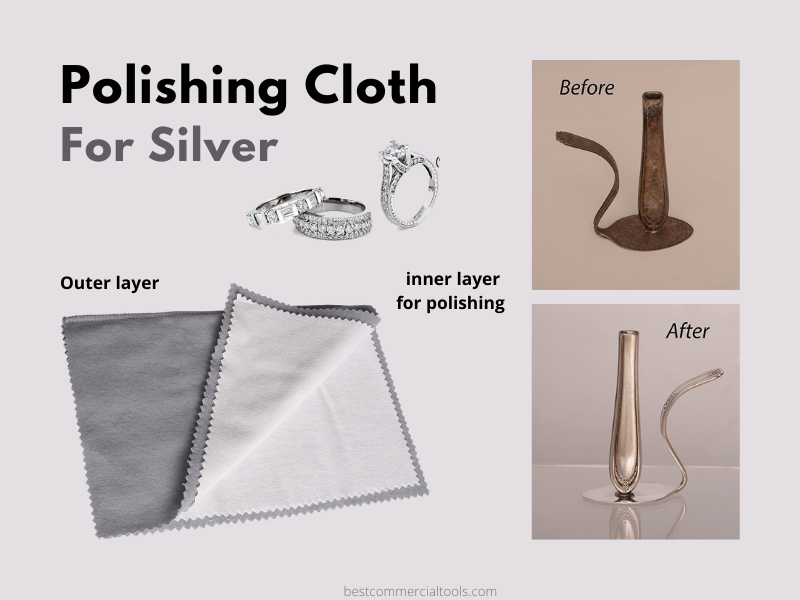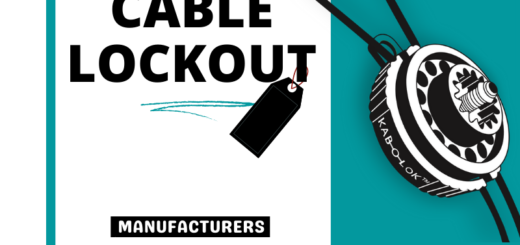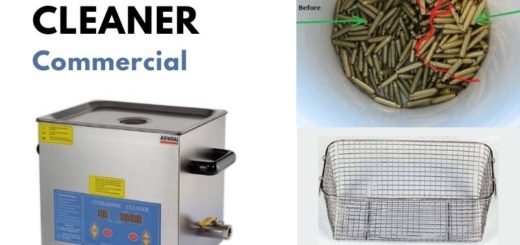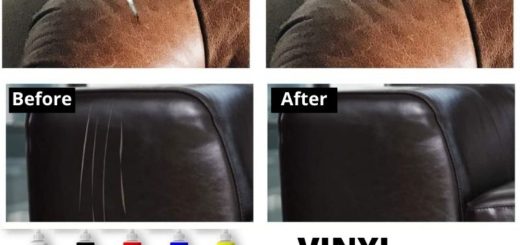5 Best Polishing Cloth for Silver – Review and Buyer’s Guide
Silver has long been the preferred metal for elegant flatware, serving pieces, and jewelry. Silver never seems to lose its popularity or value, and well-cared Silver provides years of pleasure and enjoyment and even becomes family heirlooms.
But as much as we love Silver’s splendor and ubiquitousness, the metal requires a bit of extra bit care. Silver jewelry, idols, and utensils tend to lose their luster and shine and can be affected by sweat, dirt, wear and tear. No matter how well you care for your silver jewelry, dishes, and cutlery, they will naturally tarnish over time.
What is Silver tarnish?
If you use Silver in day-to-day life, you know it can quickly tarnish, stain, or get scratched. While the metal doesn’t require much upkeep, it needs to be cleaned regularly to restore its original shine, while most-worn rings, necklaces, and other jewelry pieces may need to be polished periodically.
The purity or fineness of Silver is represented using the millesimal system, which describes purity in parts per thousand. A .950 sterling silver will be more malleable and degrade more rapidly than .925 sterling silver due to the higher purity; hence you should take extra care of high purity silver items.
Tarnish, or black silver sulfide, is an inevitable aspect of owning Silver, primarily if it is not used regularly or stored improperly. Silver items are made by mixing silver alloy with metals such as copper, brass, or nickel for strength. When this alloy is exposed to air, especially humid air with acid or sulfur, a chemical reaction creates a hazy, almost dirty appearance on the silver finish, termed as tarnish.

What is Polishing Cloth for Jewelry?
Whether it’s a set of flatware you inherited from your grandmother or an old necklace — if you have Silver, cleaning and polishing regularly ensures that your favorite items last a lifetime. Dust, grime, and residue from our lotions, perfumes, and hand creams can taint your favorite pieces leaving precious stones, sterling silver, and gold-toned metals appear dull and lackluster. Using abrasive cleaners on Silver objects can damage delicate or old parts and negatively interact with newer items. A jewelry cleaning cloth is designed to be the perfect solution for gentle cleaning on fragile items but tough enough to remove hard to get dirt and grime. The silver polishing cloth is conceived with a quality polishing compound on one side, while the other side is used to polish the jewelry surface as a tarnish remover.
How to Polish Silver Using Cloth
Cleaning sterling silver can be as easy as a quick rubdown. Use the polishing cloth or a microfiber cloth (do not use paper towels or toilet paper as it can scratch the surface) to clean your goods. Maintain long up-and-down strokes to clean the jewelry, do not employ circular motions, as it can worsen the tarnish or dirt. Do not polish any piece of the silver equipment or jewelry that is intentionally oxidized. For tight or intricately detailed areas, go in with a Q-tip to reach every nook and cranny.
When cleaning and polishing your jewelry, take special precautions to avoid damage. Using an abrasive fabric or a solution that’s not specifically formulated to be used on Silver, gold, metals, gem, and diamond can lead to scratches, cloudiness, and discoloration.
Please note that Polish by nature is abrasive, so you’ll want to limit polishing sessions to a minimum. So while you might be tempted to clean away tarnish right as soon as you notice it, you really should clean Silver as infrequently as possible.
Things to Consider Before Buying Silver Polishing Cloth
Before you purchase a silver polishing cloth, check whether it contains any mild detergent. Some clothes have an integrated detergent while others you have to buy separately.
Keep an eye on the softness of the cloth surfaces. This is a crucial factor for avoiding scratches on the top of your precious jewels’ surfaces. Most modern clothes are made from microfibers to prevent such occurrences.
Consider the size of the cloth. If you need to polish more than one piece of jewelry, opt for the larger fabrics, which give you the chance to treat multiple objects.
Check whether the polishing cloth can polish gems and pearls. Since most of your jewels are made of precious metals and diamonds, you must make sure that your buying clothes are suitable for both.
When you buy silver polishing cloths, pay extra attention to the sealed case and the expiration date. You don’t want to find yourself in the awful position to try polishing a tarnished silver jewel with a dry cloth that all its detergent has been evaporated.
Best Polishing Cloth To Choose From (Reviews)
1. Mayflower Products Pro Size Polishing Cleaning Cloth for Gold, Silver, and Platinum Jewelry
The Mayflower Pro Size polishing cloth restores the original brilliance in metals, preventing new tarnish, cleans, shines, and protects gold (14k and 18K), silver and platinum jewelry, coins, and other delicate valuables.
The Mayflower Pro size polishing cloth employs a two-step system, comprising of a white cloth impregnated with cleaning ingredients to polish the metal, while the gray flannel is untreated for a final shine. Both flannels are made of 100% ultra-soft cotton for gentle cleaning of delicate valuables. The polishing cloth’s inner part is treated with non-toxic ingredients that keep your health safe and protect the environment. The -100% cotton jewelry cleaning cloth’s outer and inner components are made of natural cotton, one of the most biodegradable fibers in the textile industry.
The size of each of the Mayflower pro cloth when opened is 11″ x 14″, with the large size providing easy polish of silverware and big pieces of jewelry and provides a better handle of small pieces with the Pro Size Polishing Cloth. This product is made in the USA with environmentally friendly ingredients. Mayflower guarantees the product with a 60-day money-back.
Please do not wash the white cleaning cloth as it is treated with cleaning ingredients that are released every time a piece of jewelry is polished, and washing the fabric will remove the remaining cleaning ingredients. If your ornaments contain porous stones such as opals, pearls, malachite, turquoise, avoid using the white cloth on the gems. To clean such jewels, use the untreated gray fabric. You can use the white cloth for other stones known as hard stones, such as amethyst, peridot, citrine, aquamarine, emerald, diamond, and sapphire.
Pros
- Easy and fast cleaning
- Super Large Size
- 60 – Day money back
Cons
- Be careful with the stuff it is not okay to use on. It comes with a small card with instructions which are unclear.
2. Goddard’s Silver Polishing Cloth
Goddard’s Silver Polishing Cloth effectively removes tarnish from your silver, silver plated, and gold items. It works perfectly on antiques, decorations, and home fixtures that you cannot rinse. The polishing cloth not only wipes off tarnish, but its non-abrasive material also leaves a protective coating on silver surfaces. This tarnish-resistant barrier defends your fixtures well into the future.
Goddard’s Silver polishing cloth is made from super soft 100% English cotton and enhanced with Goddard’s exclusive cleaning, polishing, and anti-tarnish agents. Its 17.5″ x 13″ size makes it one of the largest polishing cloth available, which lasts longer and makes it easy to complete big polishing tasks. Goddard’s cloth quickly cleans and shines while instantly removing light tarnish and leaves behind a layer of anti-tarnish protection. It also removes other kinds of decay, such as corrosion, rust, discoloration, deterioration, and time-accumulated stains.
The polish fights tarnish by washing off oxidation layers, restoring the silver’s natural sparkle and shine, making it look as good as new. It also preserves pieces of natural luster and classic beauty without damaging their finish.
Goddard’s Silver Cloth is ideal for cleaning or dusting lightly tarnished silver, silver plate, and gold. Wipe metal surfaces Goddard’s polishing cloth to remove tarnish, then buff them until they shine.
Pros
- Quickly Cleans and Shines Display Silver
- Polishes Silver that Can’t Be Rinsed
Cons
- Slightly pricey
3. SEVENWELL Jewelry Polishing Cleaning Cloth for Sterling Silver Jewelry Gold, Diamond, Platinum, Precious Stones, Coins
Add the lost shine to your gold, sterling silver, platinum jewelry, coins, copper, stainless steel, diamond, rhodium, brass, watch, and other delicate valuables with the Sevenwell jewelry polishing cloth. This polishing cloth can remove the dirt and tarnish thoroughly and also adds a protective layer to prevent your jewelry or expensive valuables from tarnishing; keep its luster all the time.
The SEVENWELL jewelry polishing cloth consists of two parts, pink and white. The white interior layer with unique cleaning ingredients removes the dirt and tarnish thoroughly. The pink outer layer will polish, buff, and shine. The inner part of the cleaning cloth is treated with non-toxic ingredients making it harmless and Odor-free. The 100% ultra-soft cotton will also keep your jewelry safe from scratching.
The SEVENWELL jewelry polishing cloth’s size of each fabric opened is 10″ x 12″ (25cm x 31.2cm), with the large size assisting in the easy polish of silverware and big pieces of jewelry. Better handle small fragments with a polishing cloth. Please note that the cleaning cloth can be reused but not washed.
Pros
- Cleans well for large, thick jewelry pieces
- Harmless and Odor-free
- Easy to use
Cons
- Not effective for tiny details on intricate pendants.
4. Sabrina Silver Polishing Cloth for Silver, Gold, Brass and Other Metals
Sabrina Silver’s polishing cloth for silver has been around for years. Initially made for silver cleaning, the fabric will also effectively clean most metal costume jewelry.
Sabrina Silver’s polishing cloth consists of 2 pieces of fabric sewn together, cream and blue. The cream cloth contains the polishing compound, which turns into fine black dust when rubbed against silver. The blue cloth removes the black dust from the silver surfaces. The cream side should be used to remove any tarnish/undesirable spots from the ornaments surface, and use the blue side fabric to apply an awesome polish to your jewelry or give the final touch to the cleaning process. Please do not wash the cloth as it is infused with a cleaning element that would be destroyed by washing.
Made of soft cotton, Sabrina’s silver polishing cloth won’t scratch surfaces. The fabric is also non-toxic; hence you can use it to polish your silverware and musical instruments. Made in the USA, Sabrina Silver’s polishing cloth measures 12X15 inches, making it work and last longer.
Pros
- Soft cotton material
- Large Size
- Work on all types of jewelry
- Non-toxic
- Easy to use,
- Scratch-free.
Cons
- Not durable
5. Peaknip Extra Large Cleaning and Polishing Cloth for Gold, Silver, Diamond, Platinum Jewelry, Watches and Coins
The Peaknip polishing cloth will clean, shine, polish, and add an anti-tarnish barrier to your jewelry, silverware. The cleaning and polishing cloth works effectively on all your gold (14K, 18K), silver, platinum, diamonds, gems, and fashion jewelry to give back its original beautiful high luster.
The Peaknip polishing cloth features a two-ply 100% ultra-soft cotton that will keep your jewelry safe from scratching. It comes with a features 2-Layer cloth; the white interior layer is made with special cleaning ingredients that will remove tarnish and dirt, while the grey outer layer will polish, buff and shine. The white interior layer is treated with non-toxic ingredients that keep your health safe and protect the environment.
The Peaknip polishing cloth measures 11’’ x 14” (28cm x 35.5cm) when unfolded. It allows you for easy handling of all small and large silverware and jewelry. The polishing cloth folds in half on a seam which helps to hold it against items you are working. The quality product is made in the USA and utilizes a convenient and easy cleaning system wherever you are, at home, or traveling. The cloth contains no harsh chemicals or abrasives. It is treated with non-toxic ingredients and is environmentally friendly.
Pros
- Adds a protective coating on polished pieces
- Can be used to clean multiple metal and surfaces
- Decent size and thickness
- Very easy to use
- It lasts for a long time
Cons
- If you have linked jewelry or need to clean crevices, you will need to use a liquid cleaner and brush to get into super small places.
How to Store Silver
If Silver is stored correctly and cleaned regularly, it rarely requires polishing. Some of the tips below help clean and care for plated or sterling silver to enjoy for generations.
For long-term storage of Silver, place the flannel rolls or bags in a plastic zip-lock bag. Remove as much air from the bag as possible before sealing it (please do not use a vacuum-sealer as the high pressure can impact delicate pieces).
Suppose you don’t want to invest in treated flannel. In that case, you can individually wrap your Silver items in buffered, acid-free tissue paper and store them in a zip-lock pack with an anti-tarnish strip to neutralize the sulfuric gases in the air.
You can also wrap your Silver in sulfur-absorbing flannel embedded with silver particles to neutralize pollutants in the air.
You can also add silica gel to the container or drawer to help absorb humidity. Silica gel is also reusable; dry it out in the oven once it’s complete, and you can use it indefinitely. You can also use sachets of activated charcoal to help absorb humidity in the air or place a piece of chalk in the storage area to reduce the atmosphere’s harmful effects.
Never store Silver loose in a drawer because it will scratch easily and tarnish quickly. Avoid wrapping it in a newspaper or storing it in cardboard boxes that aren’t acid-free. If you display your Silver in a cabinet, add a portable filtration unit in the case to reduce the effect of air on the Silver.
Do not leave silver lying on a nightstand or an open jewelry chest. Do not bunch multiple jewelry pieces in the same pouch; with Silver being a soft metal, the individual components can scratch and tangle against each other. It would be best if you kept link or chain bracelets unclasped or unhooked to prevent scratching. If you don’t have plastic bags handy, ensure that the storage area has low humidity.
If you are traveling with your jewelry, be sure to use a particular case for protection.
Bonus Tips – How to Prevent Tarnish on Silver
While natural discoloration of silver ornaments or flatware is unavoidable, there are few tips to ensure that your silverware, jewelry, and dishes don’t lose their luster as quickly.
If you wear your Silver ornaments regularly, they won’t need polishing as the oils in your skin acts as a natural polish that cleans the silver items and makes them appear shiny. You may have noticed women for generations putting jewelry in the end. It is better to put silver jewelry on after using perfume, lotions, cosmetics, hair spray, and hair products to prevent it from sticking to your Silver and accelerate tarnishing.
Silver items will corrode and tarnish when they get contacted with household chemicals, perspiration, rubber, chlorinated water, or substances containing sulfur such as mayonnaise, eggs, mustard, onions, latex, etc. Hence it’s better to remove silver ornaments while performing household chores. Ensure to take off your silver ornaments before swimming and sunbathing as direct sunlight also adversely affects Silver.










Recent Comments